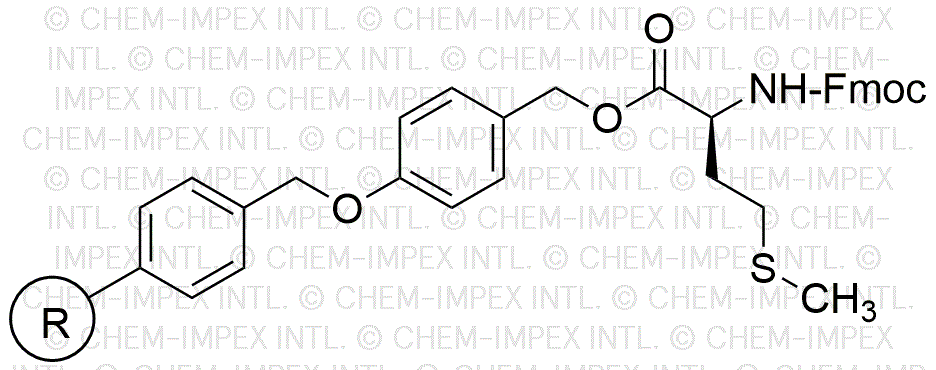Fmoc-L-methionine 4-alkoxybenzyl alcohol is widely utilized in research focused on:
- Peptide Synthesis: This compound serves as a key building block in the synthesis of peptides, facilitating the formation of complex structures that are essential in drug development and biochemical research.
- Drug Discovery: Its unique properties allow researchers to modify peptide sequences, making it valuable in the design of novel therapeutics targeting specific diseases.
- Bioconjugation: The compound can be used to attach biomolecules to surfaces or other molecules, enhancing the efficacy of drug delivery systems and improving the targeting of therapies.
- Research in Cancer Therapeutics: By incorporating this chemical into peptide-based drugs, researchers are exploring new avenues for cancer treatment, potentially leading to more effective therapies with fewer side effects.
- Material Science: Its application extends to the development of functional materials, where it can be used to create polymers with specific properties for use in various industrial applications.
General Information
Properties
Safety and Regulations
Applications
Fmoc-L-methionine 4-alkoxybenzyl alcohol is widely utilized in research focused on:
- Peptide Synthesis: This compound serves as a key building block in the synthesis of peptides, facilitating the formation of complex structures that are essential in drug development and biochemical research.
- Drug Discovery: Its unique properties allow researchers to modify peptide sequences, making it valuable in the design of novel therapeutics targeting specific diseases.
- Bioconjugation: The compound can be used to attach biomolecules to surfaces or other molecules, enhancing the efficacy of drug delivery systems and improving the targeting of therapies.
- Research in Cancer Therapeutics: By incorporating this chemical into peptide-based drugs, researchers are exploring new avenues for cancer treatment, potentially leading to more effective therapies with fewer side effects.
- Material Science: Its application extends to the development of functional materials, where it can be used to create polymers with specific properties for use in various industrial applications.
Documents
Safety Data Sheets (SDS)
The SDS provides comprehensive safety information on handling, storage, and disposal of the product.
Product Specification (PS)
The PS provides a comprehensive breakdown of the product’s properties, including chemical composition, physical state, purity, and storage requirements. It also details acceptable quality ranges and the product's intended applications.
Certificates of Analysis (COA)
Search for Certificates of Analysis (COA) by entering the products Lot Number. Lot and Batch Numbers can be found on a product’s label following the words ‘Lot’ or ‘Batch’.
Numéro de catalogue
Numéro de lot/série
Certificates Of Origin (COO)
This COO confirms the country where the product was manufactured, and also details the materials and components used in it and whether it is derived from natural, synthetic, or other specific sources. This certificate may be required for customs, trade, and regulatory compliance.
Numéro de catalogue
Numéro de lot/série
Safety Data Sheets (SDS)
The SDS provides comprehensive safety information on handling, storage, and disposal of the product.
DownloadProduct Specification (PS)
The PS provides a comprehensive breakdown of the product’s properties, including chemical composition, physical state, purity, and storage requirements. It also details acceptable quality ranges and the product's intended applications.
DownloadCertificates of Analysis (COA)
Search for Certificates of Analysis (COA) by entering the products Lot Number. Lot and Batch Numbers can be found on a product’s label following the words ‘Lot’ or ‘Batch’.
Numéro de catalogue
Numéro de lot/série
Certificates Of Origin (COO)
This COO confirms the country where the product was manufactured, and also details the materials and components used in it and whether it is derived from natural, synthetic, or other specific sources. This certificate may be required for customs, trade, and regulatory compliance.

